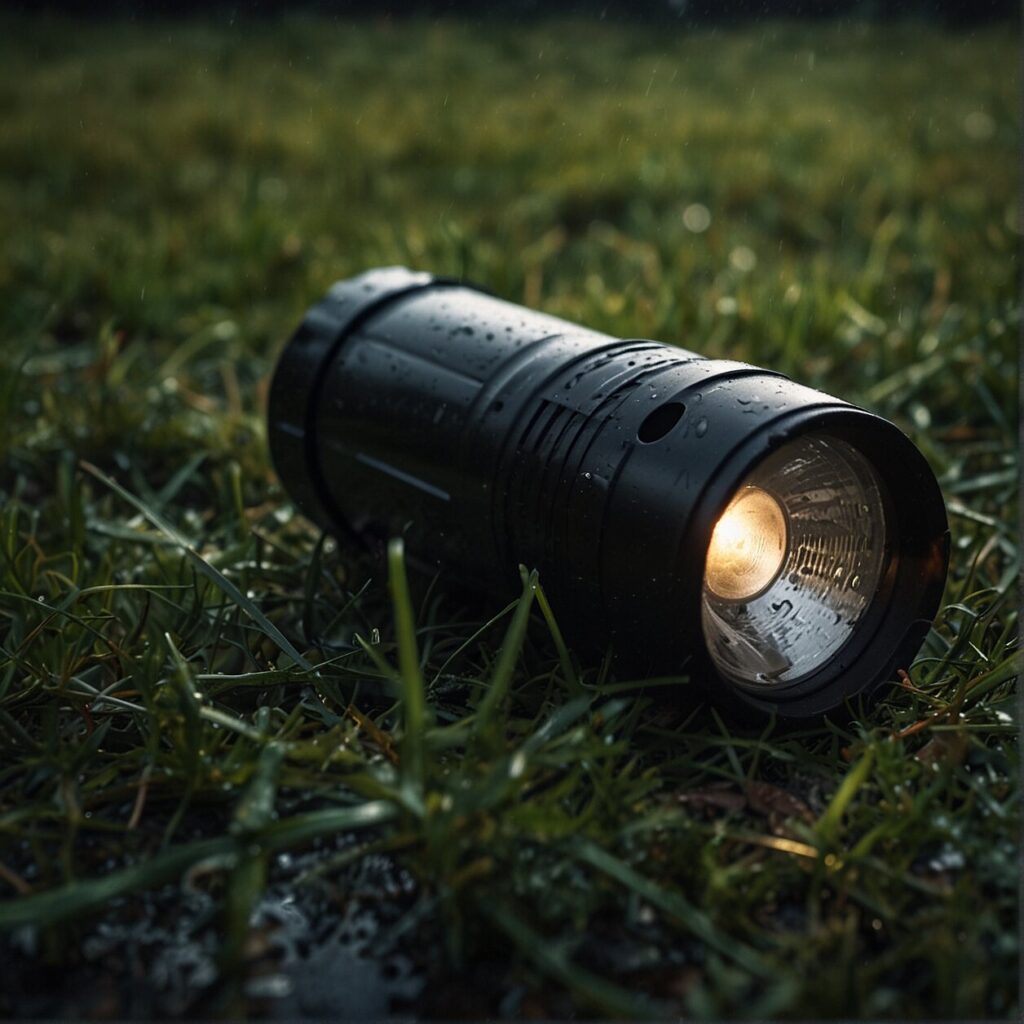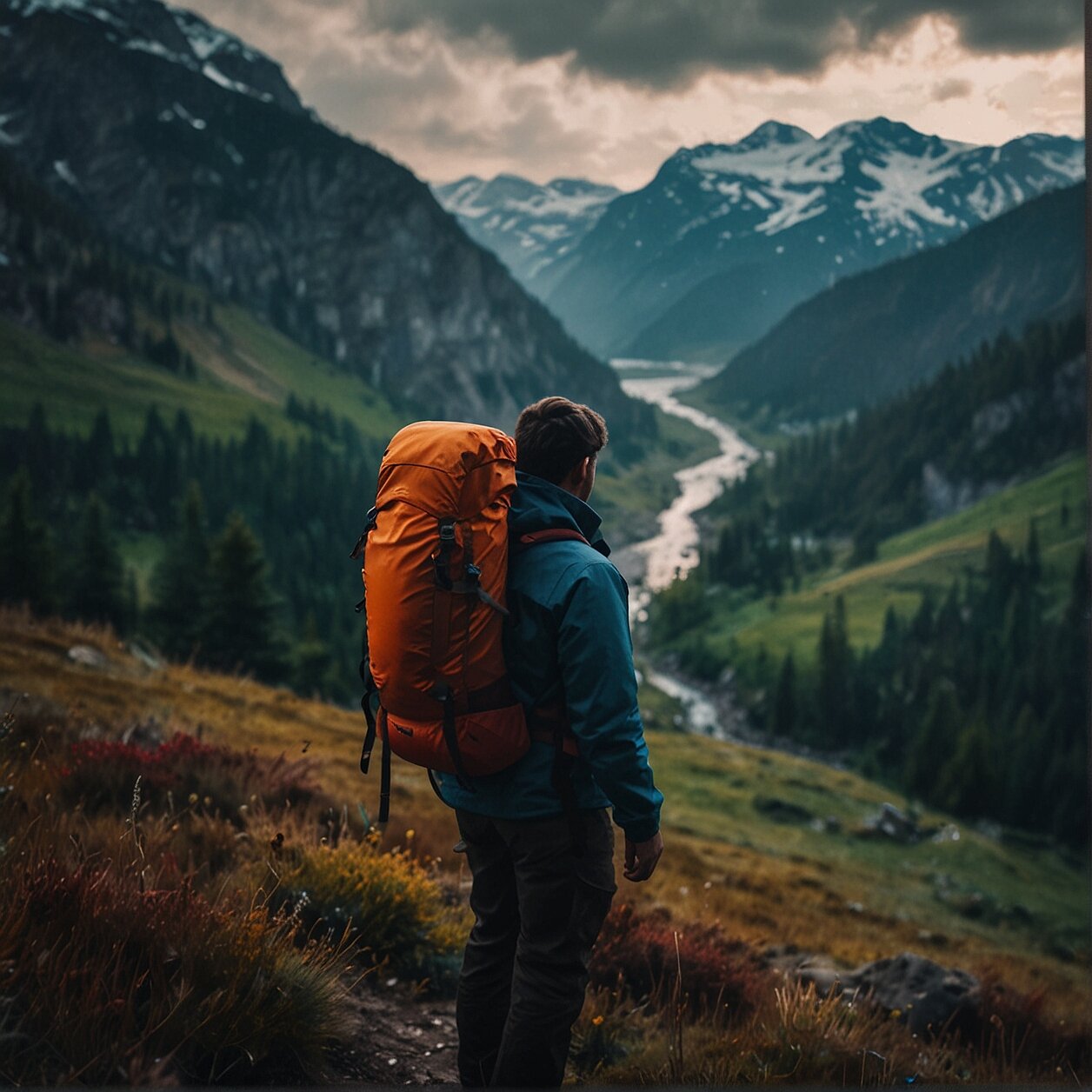Essentials to Pack for Solo Adventure Travel
Stepping into the great unknown of solo travel can be exhilarating, challenging, and enlightening, all at once. Nothing quite compares to the taste of freedom and self-discovery experienced when traversing the globe alone. But with great freedom comes great responsibility—especially when it comes to packing. As your sole companion, your suitcase quickly transforms into a survival kit. So, what exactly should it contain? This comprehensive guide aims to shed light on essential yet often forgotten items that could significantly enhance your safety and convenience during solo adventures.
“Traveling—it leaves you speechless, then turns you into a storyteller.”– Ibn Battuta. Let’s ensure the narrative of your solo travel story is filled with unforgettable memories and not avoidable mishaps.
Our checklist includes must-have items ranging from health-related necessities to communication devices and apps that could be lifesavers in a hard pinch. Plus, we share ingenious packing tips to fit the essentials while still keeping your luggage lightweight and easy to handle. Oh, and don’t worry—we’ve also got you covered on what to pack for different climates, along with handy advice on clothing choices. Are you ready to become a savvier solo traveler? Let’s explore the essentials.
Understanding the Basics of Solo Adventure Travel
Bracing the thrill of travelling alone is not just about experiencing exhilarating adventures. It’s also about the art of knowing how to manage yourself on such ambitious trips. But, don’t let this deter you! Once you understand the basics, solo travel can be an absolute life-changer. Let’s break it down.
When choosing your next destination, thoroughly research the place you plan to visit. Note different cultures, travel advisories, local customs, and local cuisines. It will give you a comprehensive understanding of what you’ll encounter. Consider noting down important emergency numbers too. You never know when you’ll need it.
Planning is key, especially when you’re travelling alone. Creating a well-researched itinerary can save you from potential troubles. It can help you plan your budget, consider all necessary travel documents, accommodation, local travel options, and more. However, always be flexible. Allow rooms for spontaneous adventures, but don’t stray off too far. Safety should always be your first priority.
Lastly, pack smart. As a solo traveler, you’ll be handling your luggage yourself. You wouldn’t want to struggle with heavy bags during your trip. This is why we strongly recommend packing light. Choose versatile clothing items, pack essential travel kits, and limit your gadget to essentials. The less stuff you carry, the more freedom you will have.
Remember, traveling alone is a journey to self-discovery. You get the chance to move at your own pace, explore places that you want to see, and have an experience that’s tailored to you. Keep these basics in mind, embrace the unfamiliar, push your boundaries, and above all, enjoy the freedom!

Prioritizing Safety: Essential Items for Solo Travelers
Traveling alone often comes with both the appeal of freedom and the challenge of self-reliance. Let’s focus on some essential items that can enhance your safety and convenience while exploring on your own. These items may not be the first to mind, but they hold prime importance.
Secure Travel Wallet
Choose a secure, RFID-blocking travel wallet. It keeps your ID, credit cards, and travel documents safe and well-organized. An excellent travel wallet is discreet, lightweight, and one that you can always keep within arm’s reach, limiting chances of loss or theft.
Portable Door Lock or Door Alarm
Safety starts from where you sleep. Your temporary abode away from home, whether a hostel dormitory or a luxury hotel suite, can be made safer with a portable door lock or door alarm. These tools are easy to carry and install, providing peace of mind by adding an extra security layer.
Safety Whistle
A safety whistle is a less obvious item but incredibly useful in many situations. It’s a method of communication in times of trouble – critical when you’re out in nature, faced with unexpected predatory wildlife or getting lost. Similarly, in an urban setting, a loud whistle can attract attention in emergencies.
LED Flashlight
An LED flashlight, preferably solar or kinetic energy-powered, is a must-have for every solo traveler. Not only does it help you safely navigate dark paths or find items in your backpack at night, but it can also signal for help in an emergency situation.
Personal Water Filter
Hydration is key in any travel scenario. A personal water filter ensures you have access to usable drinking water in a variety of situations, from metropolitan hotels with questionable tap water to remote wilderness areas lacking potable water sources.
While packing for your solo trip, remember that preparation is the first step towards a safe and enjoyable journey. By having these safety-focused items handy, you are not only taking a proactive stance towards potential complications but also ensuring a more relaxed and enjoyable solo travel experience.
Personal Safety Devices Every Solo Traveler Should Pack
Your safety is paramount, particularly when you’re traveling alone. Here are a few personal safety devices that you should remember to pack.
1. Personal Alarm: Let’s start with an item as compact as it is potent—a personal alarm. With a negligible weight to carry around, it not only draws prompt attention in case of emergencies but also acts as a deterrent to potential threats.
2. Portable Door Lock: A door lock that fits in your pocket? Yes, they exist. A portable door lock is a lifesaver in accommodation settings that might not have sturdy enough door locks. It’s easy to install and offers an added layer of security.
3. Hidden Money Belt: A precautionary measure against theft or loss, a hidden money belt worn under your clothes is essential for securely storing currency, cards, and important travel documents.
4. Pepper Spray: It might seem a bit much but putting your safety first is a necessity. While not allowed in carry-on luggage in most airlines, you can check if it’s legal to carry it in the destination you’re traveling to and buy it after reaching there.
5. Flashlight: A handy device during power cuts, finding your way in the dark, signaling help, or even doubling as a makeshift weapon, a flashlight with good battery life is a must-pack item for solo travelers.
Remember, when it comes to personal safety, it’s better to be over-prepared than under. These items might seem like an overkill, but their efficacy in a sticky situation can never be understated.
Traveling Alone: The Importance of Health and Hygiene Items
Health and hygiene may not be the first thing that comes to mind when pondering the essentials for solo travel, but they can certainly make or break your experience. Ensuring you’re well-prepared in this area not only guarantees a smoother journey, but it also substantially reduces the risk of falling sick or encountering inconveniences.
Basic First Aid Kit
A functional first aid kit should be a non-negotiable item in your travel checklist. This kit should include band-aids, antiseptic wipes, tweezers, medical adhesive tape, and sterile gauze pads. If you have space, consider including items like a digital thermometer and rehydration powders which can be key when tackling common travel ailments.
Prescription Medications
If you’re on regular medication, ensure you have an ample supply packed. It’s advisable to carry a copy of your prescriptions as well – this can facilitate easier purchase or refill if you run out or lose them.
Health Supplements and Immunity Boosters
Pack a few health supplements such as multivitamins, vitamin C or immunity boosters. Especially when traveling to places where the food may not have all the nutrients you usually consume, these can be helpful in keeping up with your nutritional needs.
Travel-Sized Toiletries
Travel-sized toiletries, including toothpaste, shampoo, conditioner, and body wash, are perfect for those who don’t have much baggage space. If you can, opt for biodegradable ones to keep your environmental footprint at a minimum.
Hygiene Essentials
Finally, don’t forget items like tissues, a hand sanitizer, wipes, or even a small bottle of soap. These days, a mask has become as important, so make sure you have a few spare ones packed. A small towel can also come in handy quite often.
Coming well-prepared in the health and hygiene department can make a world of difference to your solo travel adventure. Packing these items might seem like a lot initially, but once you start using them on your trip, you’ll realize that every single one holds its importance.

Staying Connected: Communication Devices and Apps for Solo Travelers
Navigating the digital terrain is just as crucial as mastering the physical when traveling alone. The right devices and applications can transform your solo journey from concerning to comfortable. Here’s our deep-dive into the tech areas that matter most.
Smartphone with International Capabilities
Your smartphone is arguably the most important tool in your travel arsenal. Ensure you have a model with international capabilities. This means not only will it work abroad, but also it should support dual SIM or eSIM to easily switch carrier if required. In addition, a solid battery life and a solid, durable case can prove lifesavers.
Portable Charger
Staying powered up when you’re on-the-go is essential, and a portable charger is your ticket to electrifying success. Aim for a charger that provides multiple charges and is light enough to carry easily. Do remember to keep it fully charged before embarking on the day’s adventure.
Universal Travel Adapter
Trust us, a universal travel adapter will be a boon when you find yourself in a new country with a different plug system. It’s a small, lightweight addition to your pack but it can mean the difference between staying connected to the world or being left in the dark.
Travel Apps
Navigate unfamiliar terrains, stay in constant touch with home, and keep all your travel details organized with useful travel apps. Here’s a short list of the essential ones:
- Google Maps – For location tracking and finding your way around
- WhatsApp – For keeping in touch with family and friends
- Airbnb – For finding affordable and safe accommodations
- Uber/Lyft – For convenient transportation in most urban areas
- ExpressVPN – A VPN for secure internet access, especially in public Wi-Fi zones
Language Translation Apps
Whether it’s to understand road signs, menus or simply say hello, language translation apps like Google Translate are a fantastic tool. They’re free, easy to use, and can surprisingly even facilitate catching conversations in real-time. Tested and trusted, language apps can substantively enrich your travel experience.
FAQ’S
Embarking on your first (or even your hundredth) solo adventure can be both exhilarating and nerve-racking at the same time. No matter how many journeys you’ve taken, a few gnawing questions always seem to remain. You may find yourself wondering about packing strategies, essential documents, climate-appropriate attire, survival items, and more. To help dispel some of your doubts and equip you with the knowledge you need, here are the answers to some of the most frequently asked questions about solo travel. Let’s tackle them together.
How to pack light for a solo adventure?
Packing light for a solo adventure is more of an art than a science. It’s all about maximizing the functionality of every item you bring and minimizing their size and weight. So, how do you pare it down to the essentials and still ensure you’re well-prepared for any eventuality? Here’s a guide to help you do just that.
First, start with your luggage. Opt for a lightweight, durable and waterproof backpack. Why? It’s easy to carry, can fit into any overhead bin, and can stand up against the elements.
Next, it’s all about clothing. Adhere to the rule of three – one to wear, one to wash, and one drying. Clothes made from quick-drying fabrics are your best bet. A practical tip is to roll your clothes instead of folding, which saves up space and reduces the likelihood of creases.
Make sure you bring multipurpose items. A light microfiber towel, for example, is a travel necessity. It dries quickly, can be used as a blanket, a pillow, or even a makeshift bag.
Another significant area is your electronics. Brining a kindle instead of physical books can save a lot of weight and space. Opt for a smartphone that can do it all – from GPS map navigation to taking high-quality photos, you’d be surprised at how much you can do with the right phone.
The real challenge comes with toiletries. Opt for all-in-one products or multipurpose travel bottles. Don’t forget to pack them in a waterproof toiletry bag to avoid any spills.
Finally, don’t forget your essential documents and money. Consider an e-copy of those credentials and investing in a secure travel wallet to keep them safe at hand.
Travelling light doesn’t mean leaving the essentials behind. Instead, it’s about being smart, strategic, and remembering that less often means more when it comes to the art of packing for a solo adventure.
What are some essential documents for solo travel?
Embarking on a solo journey involves a bit more paperwork than traveling with a group. But don’t fret – we’ve got you covered. Here’s a checklist of key documents to pack along.
Passport: Your gateway to international travel. Ensure that it is valid for at least 6 months beyond your planned return date. Additionally, you should bring a photocopy of your passport and keep it separate from the original.
Visas: If you’re going to a country that requires a visa, make sure you’ve applied and had it approved well in advance. It’s also a good move to have a hard copy of your visa approval, if it was issued electronically.
Travel Insurance Documents: While we hope you’ll never need it, travel insurance is a must-have for solo travelers. Have a copy of your policy and the contact details of your insurance provider handy.
Health Documentation: This encompasses a wide remit of items. It includes any prescriptions for medication you are carrying, an up-to-date list of vaccinations you’ve had, as well as any necessary health advisories or travel advisories related to health, applicable to your destinations.
Emergency Contact Information: Always have a concise list of emergency contacts. This should include contact details for your country’s embassy or consulate in your destination, local emergency services, and also a trusted contact back home.
Copy of Itinerary: If you’ve made advance reservations for accommodations, transport, or major attractions, carry electronic and hard copies of these details with you. An itinerary also allows others to know your schedule, adding an extra layer of safety while you’re on the road.
Bear in mind to store these documents safely, yet accessible. Depending on your accommodation type and the security it offers, you could choose to leave some of these at your ‘home base’ and carry copies when on the move. The intention here is to keep a balance between safety and practicality.
Which essentials should I pack for different climates?
Equipping yourself for specific weather conditions is key to solo adventuring, and the right gear can make your voyage that much smoother. Fair or foul, the climate shouldn’t interfere with your plans, and we’ve got you covered.
Chilly Climes
For cold weather, dress in layers. The innermost layer should be thermal wear made of material like merino wool, which is excellent for insulation and wicking moisture away from your body. Pack lightweight, breathable fleece for your mid-layer, and an outer layer, preferably waterproof like a down or synthetic insulated jacket. Don’t forget to take warm knit hats, gloves, scarfs, and high-quality thermal socks. Also, consider including a lightweight, compactable sleeping bag rated for cold weather.
Hot and Humid Heights
In a tropical setting, breathable, quick-drying clothing made from lightweight material like linen or moisture-wicking fabrics is the way to go. Consider adding items like sunglasses, a wide-brimmed hat, breathable socks, and sunscreen to your pack. A lightweight yet sturdy umbrella can work wonders both for sudden showers and as a sunshade.
Dry and Arid Areas
A desert environment demands protection against a relentless sun and swirling sands. Pack loose, breathable, long-sleeved clothing to protect yourself from the sun and heat. Scarves or bandanas can protect your face and neck from both sun and sand, while good quality sunglasses can shield your eyes. A refillable water bottle and a trusty hat are must-haves.
Altitude Adjustments
Traveling to high-altitude areas? Your packing list should include warm clothes, a good quality insulated jacket, hats, and gloves, along with sun protection like sunglasses, a hat, and sunscreen. Don’t forget to add altitude sickness medication to your first-aid kit – it can be a lifesaver.
Remember, the goal is to be prepared but not overloaded. Smart packing is all about selecting items that perform multiple functions and can adapt to changing surroundings. Let the very idea of adventure prompt versatility in your packing.
What kind of clothing should I pack for a solo adventure trip?
When packing for a solo adventure, it’s essential to be mindful of the climates you’ll encounter. Depending on the landscapes you’ll traverse, the clothing you pack will vary considerably. Let’s dive into some clothing essentials for different environments.
Layering for Cold Environments
When you are exploring colder areas, layering is crucial for maintaining warmth and flexibility. Begin with a thermal base layer, such as merino wool, to retain body heat. Over this, wear an insulation layer, like a fleece or down jacket. Add an outer shell that’s wind and waterproof to protect you from icy gusts and sleeting rain. Don’t forget thermal socks, gloves, a warm hat, and sturdy, waterproof boots.
Clothing for Tropical or Hot Climates
If your adventure takes you to tropical climates, go for lightweight, breathable clothing to keep you cool. Choose items that are moisture-wicking and quick-drying, particularly if you’ll be exerting yourself. Consider long-sleeve shirts and pants to protect from sun and bugs. A wide-brimmed hat, sunglasses, and sun-protective clothing will also guard against harmful UV rays.
Wardrobe for Dry, Arid Regions
In desert climates, temperatures can fluctuate dramatically from day to night, so pack for both extremes. Light-colored, loose clothing during the day will reflect sunlight and keep you cool. For the colder nights, bring along a warm jacket and thermals. A hat to shield your head from the intense desert sun is also highly recommended.
Preparing for All Weather Conditions
Regardless of your destination, always pack a lightweight, waterproof jacket. Weather can be unpredictable, and it’s better to be prepared. Always include comfortable hiking shoes that can handle diverse terrain and a couple of pairs of moisture-wicking socks.
Lastly, packing a swimsuit can be a good idea. Whether you stumble upon a secluded beach, a mountain lake, or your hotel has a relaxing pool, you’ll be ready for a quick swim.
What are some essential survival items for solo travel?
Embarking on a solo journey can indeed be a thrilling adventure, but it’s also essential to ensure you’re prepared for every feasible scenario. Certain survival items are invaluable for solo travelers. They provide a safety net, helping you confidently face and overcome challenges. So, let’s take a look at some of these quintessential companions for solo expedition.
Multi-tool Set
A multi-tool set, often small and portable, could be your ticket out of unexpected situations. Most sets include tools like a knife, a can opener, scissors, a saw, and even a small pair of tweezers. Think of it as your little bag of solutions that can help you fix a leaky tent, open a can of food, or even aid in first aid situations.
Fire-Starting Gear
Fire forms one of the basics of survival, making fire-starting gear an essential part of your travel arsenal. We recommend packing a reliable waterproof match or a magnesium fire starter. In addition to providing warmth and a means of cooking food, fire can also emit smoke signals—an additional help if you need to be located in an emergency.
Emergency Blanket
Also known as space blankets, these lightweight and compact blankets work by reflecting your body heat back to you, keeping you warm in cold conditions. Additionally, they can also act as a signaling device due to their reflective surface and can be used as a makeshift shelter.
Compact Backup Food
Consider carrying backup food items like energy bars or dried fruit snacks which are lightweight and don’t occupy much space. These are extremely useful in situations where you’re unable to find a food source. They pack calories and can sustain you until you secure a meal.
Manual Navigation Tools
While digital technologies are handy, they can sometimes fail or run out of battery. Thus, packing rudimental navigation tools such as a compass and paper map provides an extra layer of security. Plus, there’s something fulfilling about navigating landscapes the old-fashioned way.
One piece of advice before we wrap up—always familiarize yourself with the techniques and applications of these survival items before setting off. Remember, preparation is the precursor to success, especially on solo adventures.







